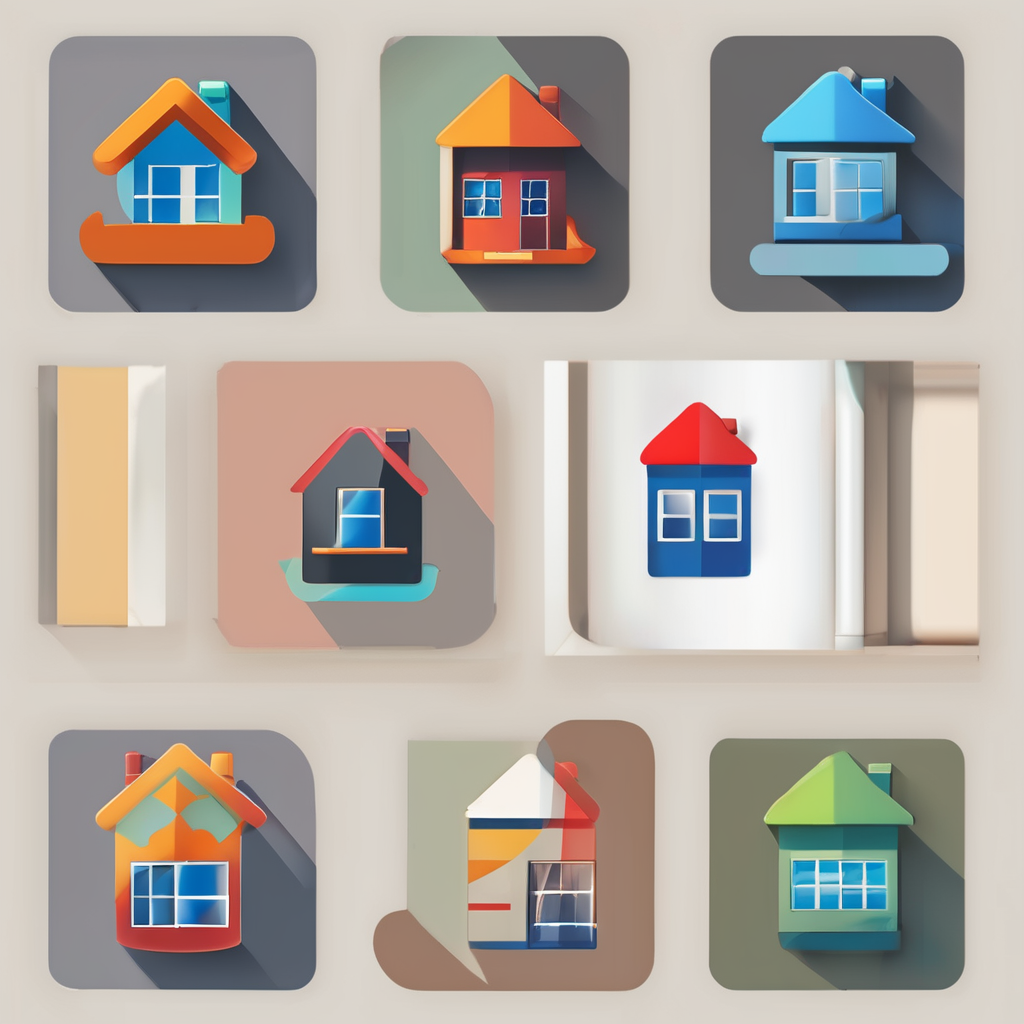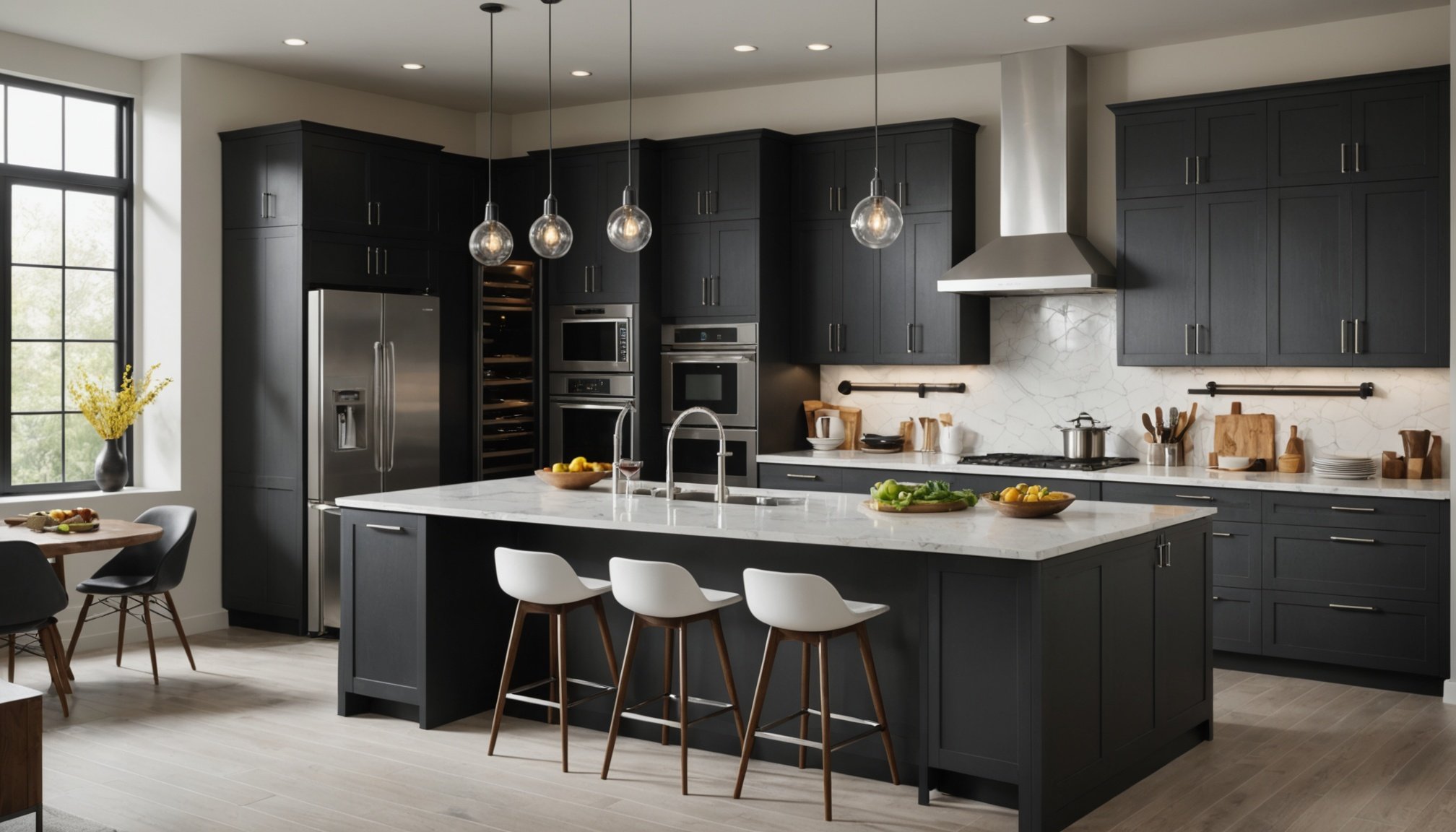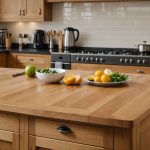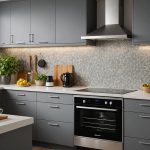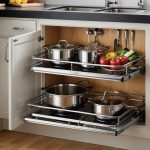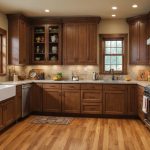Understanding Energy Consumption in Kitchens
In today’s modern smart kitchens, understanding energy consumption is essential for both environmental responsibility and financial savings. Kitchens are among the most energy-intensive spaces in a home due to the variety of appliances and their frequent use. Energy efficiency is a central theme, particularly during high-demand hours when utility rates peak. Optimizing energy use at these times not only cuts costs but also reduces strain on the grid.
One key factor affecting energy bills is the use of inefficient appliances. Traditional ovens, refrigerators, and dishwashers consume significantly more energy compared to their modern, energy-efficient counterparts. These outdated appliances can lead to higher utility costs, emphasising the need for upgrades that support better energy management.
In the same genre : Choosing the ideal kitchen sink size to suit your family”s specific requirements
The impact of kitchen energy consumption patterns extends beyond just financial implications. Inefficient energy use contributes to carbon emissions, making it critical to adopt practices that improve efficiency. Employing smart technology can streamline energy consumption and offer substantial long-term savings. Additionally, awareness of energy use patterns helps homeowners make informed decisions about appliance use and future kitchen renovations, further contributing to an eco-friendly lifestyle.
Smart Appliances and Technologies
Incorporating smart appliances into kitchen designs can significantly elevate energy efficiency and reduce consumption. These devices often include energy-saving features, such as auto power-off, scheduling, and real-time monitoring capabilities. For example, a smart refrigerator can adjust cooling cycles based on usage patterns, ensuring minimal energy use when demand is low yet sufficient cooling during peak times. Similarly, a smart oven might preheat only when necessary, using algorithms to predict meal preparation habits.
Have you seen this : Designing the ideal kitchen island with a built-in pet bed: an innovative guide for pet enthusiasts
The benefits of integrating energy-saving technology within kitchens extend beyond just convenience. Such advances in technology allow homeowners to make data-driven decisions about their appliances, ultimately leading to long-term savings on energy bills. Furthermore, connectivity with smart home systems enables cohesive management of energy consumption across different areas of the house, improving efficiency.
Kitchen upgrades to embrace smart technologies not only improve energy usage but can also enhance the functionality and aesthetic appeal of the space. Energy-efficient dishwashers, induction cooktops, and LED lighting are additional examples that contribute to lowered carbon footprints while making everyday tasks more straightforward. By adopting these technologies, homeowners can create a modern, efficient lifestyle that aligns with both environmental goals and economic savings.
Designing Energy-Efficient Kitchens
Designing a kitchen with energy efficiency in mind involves integrating sustainable practices across different aspects of the renovation. The layout plays a crucial role in minimizing energy waste, ensuring that appliances are positioned for optimal performance and accessibility, reducing unnecessary energy expenditure.
Space Optimization
Careful planning and placement of appliances can significantly enhance energy efficiency. For instance, positioning a refrigerator away from heat sources like ovens can prevent it from using extra energy to maintain proper cooling. Optimizing space by using compact designs ensures that every inch of the kitchen is functional and efficient.
Lighting Solutions
Another key component is utilising natural light to its full potential. Incorporating large windows or skylights in the design can significantly reduce reliance on artificial lighting. When artificial lighting is necessary, opting for LED lighting is beneficial as it consumes less energy and lasts longer than traditional bulbs.
Material Selection
Choosing sustainable materials is essential for an energy-efficient kitchen. Materials with high thermal mass, like concrete or stone, help regulate temperature, reducing the need for additional heating or cooling. Beyond aesthetics, such materials enhance energy efficiency, contributing to an environmentally friendly setup. Through deliberate space and design choices, kitchens can achieve sustainability and functionality.
Strategies for Energy Savings During Peak Hours
Identifying peak hours is crucial for effective energy-saving strategies in the kitchen. These periods typically coincide with increased grid demand, often leading to higher electricity rates. To combat this, employing timers and smart controls can optimise appliance usage, minimising energy costs. For instance, programming dishwashers and washing machines to operate during off-peak hours can lead to substantial savings.
Timers are an accessible tool for managing energy consumption. Setting devices to switch on or off automatically allows for precise control without constant manual input. Smart controls enhance this further by learning user habits and adjusting operations to maximise efficiency. These technologies ensure appliances work smarter, not harder, thereby reducing waste.
Real-life examples demonstrate considerable savings via such techniques. Consider a smart kitchen upgrade using programmable thermostats and connected lighting systems. This combination can reduce electricity usage by 10-15%, significantly trimming energy bills. These practices not only cut costs but are also environmentally conscious, contributing to a more sustainable lifestyle.
In the context of kitchen management, deliberate scheduling and strategic appliance operation are key. Embracing modern solutions tailored to energy efficiency during peak hours can effectively transform consumption habits.
Case Studies in Smart Kitchen Transformations
Delving into real-world kitchen renovations provides illuminating insights into how smart technologies reshape energy consumption patterns. Take the example of the Henderson family, who integrated smart appliances in their outdated kitchen with remarkable results. By replacing conventional devices with cutting-edge models, such as a smart fridge and an energy-efficient induction cooktop, they reported a 20% reduction in monthly energy consumption. This substantial decrease is attributed to the precision management capabilities of smart technologies, which optimise appliance performance based on usage data.
Another case of successful implementation is the transformation within the Lewis residence. By adopting kitchen upgrades like smart dishwashers and intelligent lighting systems, they achieved even greater energy savings of 30%. These enhancements not only minimised carbon footprints but also aligned with their goal for a sustainable lifestyle.
Through these examples, it becomes evident that integrating energy-efficient appliances is not just an investment in sustainability, but also in financial savings. Moving forward, such transformative strategies will likely inform future trends in kitchen design, highlighting the growing importance of energy efficiency in modern households. For homeowners, these case studies serve as practical proof that embracing smart kitchen innovations can yield significant long-term benefits.
Visual Inspiration and Design Ideas
Turning your kitchen into a hub of energy efficiency doesn’t just stop at functionality; it extends to aesthetic and design. By incorporating visually stimulating elements, you can enhance both the energy saving and the aesthetic appeal of your space.
Innovative Layout Ideas
Your kitchen layout significantly affects energy efficiency. Positioning appliances thoughtfully can cut unnecessary energy consumption. For instance, the “triangle” layout ensures that the fridge, stove, and sink are easily accessible, minimising the energy consumed while moving between tasks.
Appliance Integration Examples
Seamlessly integrating appliances into your kitchen design can further amplify energy efficiency. Built-in smart dishwashers or refrigerators not only offer convenience but also maintain a streamlined look that complements the overall aesthetic. This integration supports efficient function, marrying form and utility.
Eco-Friendly Decor
Eco-friendly decor choices can bind the design together while promoting sustainability. Infuse natural materials like bamboo or recycled glass into counters and backsplashes for an authentic touch. Using plants as decor can improve air quality and resonate with ecological themes.
Whether you’re redesigning or simply upgrading, these ideas provide a blueprint for creating a kitchen that’s both stylish and efficient.
